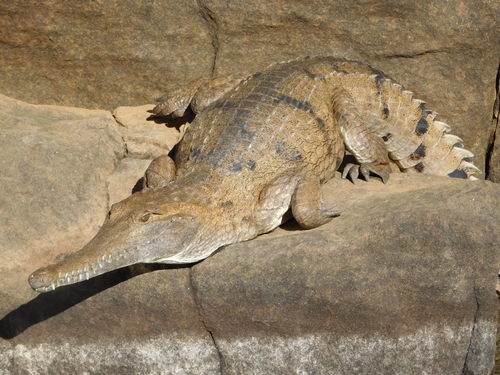
Freshwater Crocodile
The freshwater crocodile, with its graceful, slender snout and agile nature, thrives in Australia’s rivers. Unlike its saltwater relative, this 'freshie' is less aggressive, contributing to the ecological harmony by controlling fish populations. Its unique adaptability to freshwater habitats marks its evolutionary success.
40-60 years
Lifespan
72.121 kg
Weight
Length: 2.286 - 2.972 m
Size
Grey, Dark, Brown, Dull, Olive, Light-Brown
Color
17-20 years
Age of Sexual Maturity
10.56 mph
Top Speed
Least Concern
Conservation Status
Stable
Population Trend
Characteristics
Crocodylus johnstoni, known as the freshwater crocodile or 'freshie,' inhabits northern Australia's rivers and wetlands. It is distinct for its slender snout and smaller size compared to its saltwater cousin. Adapted to freshwater environments, it preys on fish and small mammals, playing a crucial role in maintaining ecosystem balance.
Distribution Range of the Freshwater Crocodile
Crocodylus johnstoni, commonly known as the Australian freshwater crocodile, is native to northern Australia. Its geographical distribution includes the northern regions of Queensland, the Northern Territory, and Western Australia. The species is primarily found in inland freshwater systems across this range.
Freshwater Crocodile's Habitat
Environmental Conditions
The Australian freshwater crocodile inhabits freshwater environments such as rivers, lakes, swamps, and billabongs. These areas are typically characterized by tropical and subtropical climates, with distinct wet and dry seasons. The species thrives in clear, slow-moving waters and areas with abundant vegetation along the banks.
Ecological Niche
Crocodylus johnstoni occupies an ecological niche as a mid-level predator within its habitat. It preys on fish, amphibians, crustaceans, and occasionally small mammals and birds. The species is well-adapted to its environment, with a slender body that allows for efficient swimming and maneuvering in water. It plays a crucial role in maintaining the balance of the aquatic ecosystem by controlling the population of its prey species.
Copyright @ Nature Style Limited. All Rights Reserved.
 English
English